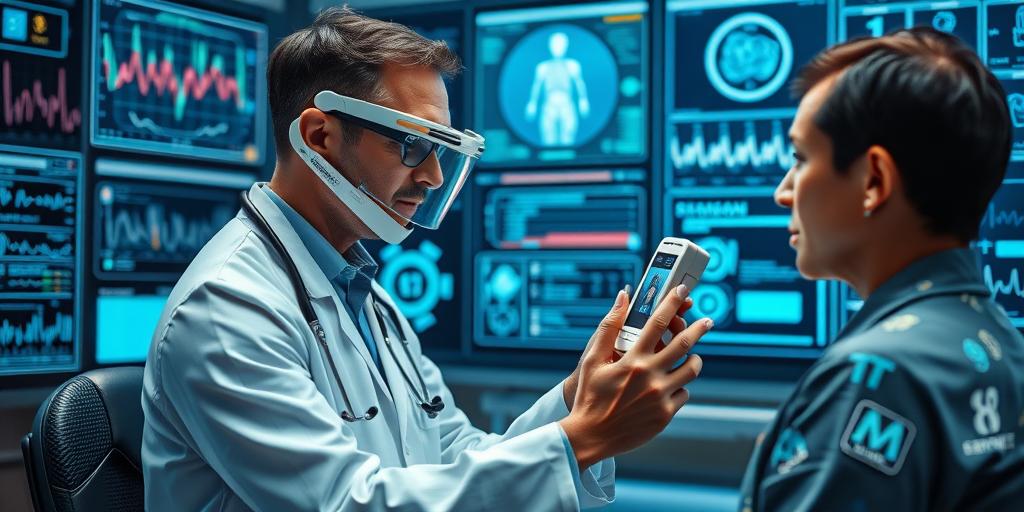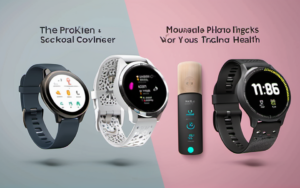The world of healthcare is undergoing a dramatic transformation, fueled by the rapid advancement of technology. From wearable devices that track our every move to sophisticated artificial intelligence algorithms that analyze complex medical data, healthcare technology is revolutionizing how we approach health and well-being. This shift towards a more data-driven and personalized approach to healthcare is creating exciting new possibilities for both patients and healthcare professionals.
Gadgets Revolutionizing Healthcare
Introduction: The Rise of Smart Healthcare
The rise of smart healthcare is driven by a confluence of factors, including the increasing adoption of smartphones, the growing availability of affordable sensors, and the emergence of powerful algorithms that can analyze vast amounts of data. This convergence of technology is creating a new landscape where healthcare is becoming more accessible, personalized, and proactive.
Wearable Technology: Monitoring Health in Real-Time
Wearable technology is at the forefront of this revolution, empowering individuals to take control of their health and well-being.
Fitness Trackers: Beyond Steps and Calories
Beyond simply tracking steps and calories burned, fitness trackers are now equipped with advanced sensors that can monitor heart rate, sleep patterns, and even stress levels. This real-time data can provide valuable insights into an individual’s overall health, allowing them to make informed decisions about their lifestyle choices.
Smartwatches: Heart Rate Monitoring and More
Smartwatches have become an integral part of many people’s lives, and their integration with healthcare technology is rapidly expanding. They can monitor heart rate, blood oxygen levels, and even detect irregular heart rhythms, providing early warning signs of potential health issues.
Continuous Glucose Monitors: Empowering Diabetics
Continuous glucose monitors (CGMs) are revolutionizing diabetes management, providing diabetics with real-time blood sugar readings throughout the day. This empowers them to make proactive adjustments to their diet, exercise, and medication, leading to better control of their condition.
Telemedicine: Bridging the Gap in Healthcare Access
Telemedicine is another transformative force in healthcare, utilizing technology to bridge the gap in access to healthcare services.
Virtual Consultations: Convenience and Accessibility
Virtual consultations, powered by video conferencing and other communication technologies, allow patients to consult with healthcare providers remotely. This is particularly beneficial for individuals living in remote areas or with limited mobility.
Remote Patient Monitoring: Keeping Tabs on Health
Remote patient monitoring (RPM) utilizes wearable devices and other sensors to collect vital health data from patients, which is then transmitted to healthcare providers. This allows healthcare professionals to monitor patients remotely, identifying potential health issues early and intervening proactively.
Telehealth Apps: Connecting Patients and Providers
Telehealth apps are a growing segment of the healthcare technology landscape, offering a range of services, including appointment scheduling, prescription refills, and secure messaging between patients and providers. These apps are making healthcare more convenient and accessible for everyone.
Artificial Intelligence: Enhancing Diagnosis and Treatment
Artificial intelligence (AI) is playing an increasingly vital role in healthcare, transforming how diseases are diagnosed and treated.
AI-Powered Imaging Analysis: Detecting Diseases Early
AI algorithms can analyze medical images, such as X-rays and CT scans, with remarkable accuracy, identifying subtle patterns that may be missed by human eyes. This can lead to earlier detection of diseases, allowing for more effective treatment.
Robotic Surgery: Precision and Minimally Invasive Procedures
Robotic surgery systems are being used in a growing number of surgical procedures, offering enhanced precision, minimally invasive techniques, and faster recovery times. These systems rely on advanced AI algorithms to guide the surgical instruments.
Personalized Medicine: Tailoring Treatment to Individuals
AI is also driving the development of personalized medicine, where treatment plans are tailored to the specific genetic and lifestyle factors of each individual. This personalized approach has the potential to improve treatment outcomes and reduce side effects.
The Impact of Gadgets on Patient Care
Improved Patient Engagement and Empowerment
Gadgets empower patients to take an active role in managing their health. Wearable devices, telehealth apps, and other technologies provide individuals with real-time data about their health, allowing them to make informed decisions about their lifestyle choices.
Enhanced Disease Management and Prevention
Healthcare technology is leading to more effective disease management and prevention. Wearables can track vital signs, alerting individuals to potential health issues early. Telemedicine allows healthcare providers to monitor patients remotely, providing timely interventions and preventing complications.
Increased Efficiency and Cost-Effectiveness
The use of gadgets in healthcare can also improve efficiency and reduce costs. Telemedicine reduces the need for in-person visits, while AI-powered systems can automate tasks, freeing up healthcare professionals to focus on patient care.
Challenges and Ethical Considerations
While the use of gadgets in healthcare offers significant benefits, there are also challenges and ethical considerations that must be addressed. These include ensuring data privacy and security, addressing potential bias in AI algorithms, and ensuring equitable access to technology.
The Future of Healthcare: A Gadget-Driven Landscape
Emerging Technologies: From Brain-Computer Interfaces to Nanobots
The future of healthcare is likely to be driven by even more advanced technologies. Brain-computer interfaces, which allow communication between the brain and external devices, have the potential to revolutionize treatment for neurological disorders. Nanobots, microscopic robots that can travel through the bloodstream, are being developed to deliver drugs, repair damaged tissues, and even fight cancer.
The Role of Data and Privacy in Healthcare
The use of data in healthcare is crucial to the development of new treatments and personalized medicine. However, it is essential to ensure that this data is collected, stored, and used responsibly, respecting patient privacy and security.
The Importance of Education and Accessibility
The widespread adoption of healthcare technology requires education and training for both healthcare professionals and patients. It is also essential to ensure equitable access to technology, particularly in underserved communities.
The use of gadgets in healthcare is transforming the way we approach health and well-being. From wearable devices that track our vital signs to AI algorithms that analyze medical images, technology is empowering both patients and healthcare professionals to take a more proactive and personalized approach to healthcare. As technology continues to evolve, we can expect even more innovative solutions that will improve healthcare outcomes and enhance the overall quality of life.




